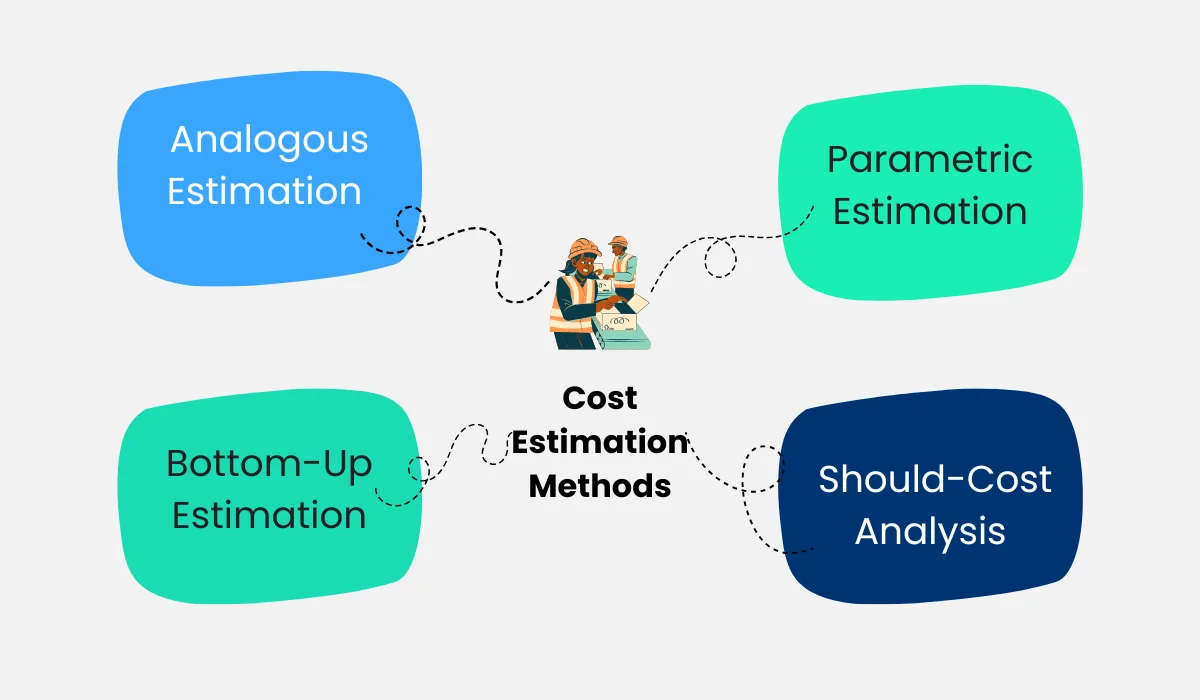Table of Contents
Estimating costs in electronics manufacturing is never simple. Every component, from resistors and capacitors to ICs and connectors, adds up, and missing even a small expense can eat into profits or throw off a production schedule. But accurate cost estimation for an electronic product isn’t just about numbers; it’s about understanding the financial impact of your design choices, production decisions, and supplier agreements before the first component hits the assembly line.
For engineers, procurement teams, and operations managers, the challenge is real: how do you produce a reliable estimate quickly without getting lost in endless spreadsheets or chasing suppliers for quotes? The answer lies in using the right techniques and manufacturing cost estimation software at the right time. This guide breaks down practical methods and software solutions that help you get fast, accurate, and actionable estimates, so your projects stay profitable and on schedule.
Why Accurate Cost Analysis of Electronic Product Matters
Accurate cost estimation isn’t just a box to tick; it shapes how projects move forward. A small miscalculation in components, labor, or testing can quickly eat into your margins or make a quote uncompetitive. Getting the numbers right early allows teams to evaluate design choices, weigh alternatives, and plan production with confidence.
It’s also a huge advantage when negotiating with suppliers. Knowing what a product should cost means you can spot overpriced components, propose alternatives, and anticipate price fluctuations before they impact your budget. And when you factor in hidden expenses like testing, regulatory compliance, or rework, you reduce surprises and avoid delays.
In short, accurate estimation of manufacturing electronic products is more than a number. It’s a tool that keeps decisions grounded in reality, protects profits, and keeps projects running smoothly.
Core Techniques for Estimating the Cost of Electronic Products

Choosing the right technique depends on how much information you have and how accurate you need the estimate to be. There are several methods of cost estimation; you can try any that fits your business.
1. Analogous Estimation
It is all about using experience. If you’ve built a 6-layer PCB before, a similar new board can be estimated based on your previous spending, with adjustments for any differences. It’s fast and gives a rough idea, but it’s less reliable if the new design has unique elements.
2. Parametric Estimation
This method of cost estimation relies on formulas and factors tied to measurable parameters, such as PCB area, component count, or assembly steps. It’s perfect during concept or prototype stages because it’s quick and systematic. By applying cost factors consistently, you get a reasonable estimate without diving into every detail.
3. Bottom-Up Estimation
Bottom-up is the most detailed approach. Every component, labor hour, machine cycle, and overhead cost is accounted for, giving a comprehensive view of the project. This method is ideal for pre-production or large-scale manufacturing where accuracy matters most.
4. Should-Cost Analysis
Should-cost is about understanding what a product should cost. Using supplier benchmarks and market data, you can see if quoted prices are fair and where you can optimize. It’s especially useful during supplier negotiations or for high-value components.
Most electronic manufacturers combine these approaches: start fast with analogous or parametric methods, refine with bottom-up costing, and verify with should-cost analysis for supplier talks.
Cost Estimation Software For Electronic Manufacturers
The right tool makes estimation faster, more accurate, and less stressful because manual spreadsheets can’t keep up with complex BOMs or multiple projects. So, what to try? Here’s a list of a few.

1. ERP and MRP Systems
SAP, Oracle, or Microsoft Dynamics track real-time component prices, labor rates, and overhead. This ensures estimates are based on current data, not old assumptions. They also improve collaboration across engineering, procurement, and finance teams.
2. Specialized Costing Software
Software for cost estimation of electronic products takes BOMs and produces detailed cost models automatically. Cost It Right, for example, highlights high-cost components, calculates material and labor costs, and offers predictive insights for scenario planning. These tools make it easier to spot savings opportunities before production begins.
3. CAD-Integrated Estimators
Estimators connect design files to costing software, providing engineers with instant feedback on how design choices impact costs. Adjusting PCB layers, component placement, or assembly steps becomes faster and informed by real cost data, preventing expensive redesigns.
4. RFQ Automation Platforms
These platforms allow BOMs to be sent to multiple suppliers at once, and responses are quickly compared. This reduces administrative work, minimizes errors, and speeds up supplier selection.
5. AI-Driven Cost Prediction Tools
AI tools for cost estimation analyze historical data, supplier trends, and market conditions to forecast costs, flag risks, and suggest alternatives. These tools help teams plan proactively instead of reacting to surprises.
Using these tools alongside structured estimation methods ensures your estimates are both fast and reliable.
Best Practices that Complement the Above Tools for Accurate and Fast Estimation
Even with the right techniques and tools, estimates can fall short without good practices:
- Maintain an Updated Cost Database: Keep track of supplier prices, labor rates, and overhead. Outdated data leads to inaccurate numbers, lost margins, or uncompetitive quotes.
- Collaborate Early Across Teams: Engineering, procurement, and finance should share input early. This ensures that design choices, supplier data, and overhead are all considered before estimates are finalized.
- Factor in All Costs: Don’t forget testing, compliance, rework, or specialized assembly. Including these soft costs avoids surprises and keeps production schedules realistic.
- Match Technique to Project Stage: Early designs benefit from analogous or parametric estimates, while bottom-up works best before production. Use should-cost analysis when negotiating with suppliers.
- Include Risk Buffers: Account for component lead times, market volatility, and supplier reliability to mitigate potential risks. A small buffer prevents budget overruns.
- Leverage Tools, But Stay Involved: Platforms like Cost It Right, CAD-integrated estimators, and AI tools simplify calculations, but humans still need to review and interpret the data.
- Document Assumptions: Record your methods, formulas, and sources. This ensures repeatability and provides a reference for future projects.
Following these practices makes manufacturing cost estimation fast, accurate, and actionable, keeping projects profitable and on schedule.
Conclusion
Cost estimation of manufacturing electronic products doesn’t have to be a headache. With the right techniques and tools, it becomes predictable and strategic. Start by picking methods that fit your project stage, analogous, parametric, bottom-up, or should-cost, and combine them with tools like Cost It Right, CAD-integrated estimators, and AI-driven platforms.
This approach helps you move faster, reduce errors, and protect margins. Accurate costing is more than a number; it’s a way to make informed decisions, avoid surprises, and keep projects profitable. Over time, applying these methods consistently turns cost estimation from a stressful task into a competitive advantage for your team.





